Essential Equipment for Industrial Beer Production 1
In the world of industrial beer production, the scale and efficiency of operations are key factors that determine the quality, consistency, and profitability of the final product. Unlike homebrewing, where small batches allow for manual adjustments and experimentation, industrial brewing requires precision and consistency on a much larger scale. This necessitates specialized equipment that can handle large volumes while maintaining the integrity of the beer-making process. Below are some of the essential pieces of equipment used in industrial beer production.
1. Malt Mill: The Foundation of Brewing
The malt mill is one of the most crucial pieces of equipment in the beer brewing process, serving as the starting point for converting raw ingredients into beer. The primary function of the malt mill is to crush malted barley, breaking it down into smaller particles that will later be mixed with hot water in the mashing process. This initial step is vital because it determines the efficiency of sugar extraction, which directly impacts the yield, flavor, and quality of the beer.
The Milling Process in Detail
When barley grains are malted, they develop a husk and internal starch reserves that need to be accessed for brewing. The milling process breaks open these grains, exposing the starchy endosperm while ideally keeping the husks as intact as possible. The husks play a crucial role later during lautering, acting as a natural filter bed.
There are different types of malt mills, including roller mills, hammer mills, and disc mills, each with specific advantages depending on the brewery’s scale and requirements.
Roller Mills: The most common type in industrial settings, roller mills use pairs of cylindrical rollers to crush the grain. The spacing between the rollers can be adjusted to control the crush size, ensuring the grain is cracked rather than pulverized. This method is preferred for its ability to produce a consistent grind size and maintain the integrity of the husk.
Hammer Mills: These mills use rotating hammers to shatter the grain, resulting in a finer grind. While this method is effective for maximizing the surface area of the starches, it can produce more flour and can damage the husks, which might complicate the lautering process. Hammer mills are typically used in distilleries or breweries with specific requirements.
Disc Mills: Less common, disc mills grind the grain between two abrasive discs. These are often used in smaller breweries and are known for their versatility in processing various types of grains.
Key Parameters and Performance Metrics
Several factors influence the performance of a malt mill, and breweries often adjust these parameters to optimize their milling process:
Crush Size: The ideal particle size typically ranges between 0.8 to 1.2 mm. Finer grinds increase the surface area for enzyme action but can lead to issues during lautering. Coarser grinds, on the other hand, might not extract as much fermentable sugar but can improve lautering efficiency. The balance is critical.
Extraction Efficiency: This metric reflects how effectively sugars are extracted from the malt during mashing. The milling process can significantly impact this, with well-milled grains contributing to extraction efficiencies of 75-85% in industrial settings. For example, a well-tuned roller mill might achieve an extraction efficiency of around 80%, meaning that 80% of the available starches are converted into fermentable sugars.
Capacity: Industrial malt mills are designed to process large quantities of grain quickly. A typical industrial roller mill can handle between 1,000 to 20,000 kilograms of malt per hour, depending on its size and the brewery's requirements. For instance, a large brewery might use a roller mill that processes 10,000 kg/hour, ensuring that the mash tun receives a continuous supply of milled grain.
Moisture Content: The moisture content of the malt influences how it mills. Ideally, the moisture content should be between 4-6%. Grains that are too dry can become too powdery, while those with too much moisture may clump together and not mill evenly.
Example: Milling in Large-Scale Breweries
Consider a large brewery producing 1 million hectoliters of beer annually. With a brewhouse operating at 10 brews per day and each brew requiring 10,000 kg of malt, the malt mill must handle 100,000 kg of malt daily. A roller mill with a capacity of 15,000 kg/hour would operate for about 6-7 hours each day to meet this demand.
To maintain high extraction efficiency and ensure consistency across brews, the brewery might monitor the grind size regularly, adjusting the roller spacing as needed. Automated systems can be employed to measure particle size distribution, ensuring the mill consistently produces the desired grind.
Importance of Consistency and Maintenance
Consistency is key in industrial brewing, and the malt mill plays a crucial role in this. Regular maintenance is required to ensure the rollers are sharp and evenly spaced. Wear and tear on the rollers can lead to an inconsistent grind, which in turn can affect the mashing process, reduce extraction efficiency, and ultimately impact the flavor and clarity of the beer.
The malt mill is a foundational element of the brewing process. By effectively breaking down the malted barley, it sets the stage for efficient sugar extraction and high-quality beer production. With the right equipment and careful management of milling parameters, breweries can optimize their processes, ensuring each batch of beer meets the desired standards for flavor, clarity, and consistency.
2. Mash Tun: The Heart of the Brewing Process
The mash tun is one of the most critical components in the beer brewing process, serving as the vessel where crushed malt is combined with hot water to create the mash. This process, known as mashing, is essential for converting the starches in the malted barley into fermentable sugars, which will later be fermented by yeast to produce alcohol and CO2. In industrial brewing, the mash tun is designed to handle large volumes of grain and water, and its construction and operation are key to ensuring consistent, high-quality beer production.
The Mashing Process in Detail
Mashing is a carefully controlled enzymatic process where malted barley (and sometimes other grains) is mixed with water at specific temperatures. The goal is to activate enzymes in the malt, particularly amylases, which break down the complex starches into simpler sugars like maltose. These sugars are essential for fermentation, as they are the primary source of food for the yeast.
The mashing process typically involves several temperature steps, each designed to optimize the activity of different enzymes:
Acid Rest (35-45°C / 95-113°F): Used less frequently in modern brewing, this step promotes the activity of phytase, which can break down phytin and slightly acidify the mash, but it is not always necessary depending on the malt and water chemistry.
Protein Rest (45-55°C / 113-131°F): This rest activates proteolytic enzymes that break down proteins, improving the clarity of the beer and stabilizing the foam.
Saccharification Rest (62-72°C / 144-162°F): This is the most important step, where amylase enzymes convert starches into fermentable sugars. The lower end of this range favors beta-amylase, producing more fermentable sugars (maltose), while the higher end favors alpha-amylase, producing more dextrins, which contribute to the body and mouthfeel of the beer.
Mash-Out (75-78°C / 167-172°F): The mash is heated to this temperature to stop enzyme activity and make the mash more fluid, facilitating the transfer of the wort to the lauter tun.
Industrial Mash Tun Design and Features
Industrial mash tuns are designed with several key features to handle the large-scale brewing process:
Size and Capacity: The size of the mash tun is directly related to the scale of the brewery. For example, a large brewery producing 500,000 hectoliters of beer annually might use a mash tun with a capacity of 100 hectoliters (10,000 liters) or more. The capacity must match the brewery's production requirements, ensuring that each batch can be efficiently processed.
Material and Construction: Mash tuns are typically constructed from stainless steel, which is durable, easy to clean, and resistant to the high temperatures and acidic environment of the mash. The vessel must be robust enough to withstand repeated heating and cooling cycles, as well as the mechanical stress of mixing large volumes of grain and water.
Heating Systems: Industrial mash tuns are equipped with various heating mechanisms, such as steam jackets or direct-fire systems, to control the temperature of the mash precisely. In modern breweries, steam jackets are commonly used because they provide even heating and are easier to control. The ability to precisely control temperature is crucial, as even small deviations can affect enzyme activity and, consequently, the efficiency of starch conversion.
Agitators and Mixing Systems: To ensure an even distribution of heat and prevent the mash from settling or scorching, industrial mash tuns are fitted with agitators. These are typically motor-driven paddles or rakes that continuously stir the mash, ensuring that all grains are exposed to the water and that the temperature remains consistent throughout the vessel. In some systems, automated controls adjust the speed and intensity of mixing based on the mash's viscosity and temperature.
Automation and Control Systems: Many modern mash tuns are integrated with automated control systems that monitor temperature, pH, and other critical parameters in real-time. These systems can make adjustments on the fly, ensuring optimal conditions for enzymatic activity. For example, if the mash temperature drops slightly below the target range, the system can automatically increase the heating to bring it back to the desired level.
Performance Metrics and Efficiency
Several metrics are used to evaluate the performance of a mash tun in an industrial setting:
Conversion Efficiency: This measures the percentage of starches converted into fermentable sugars during the mash. High conversion efficiency is critical for maximizing yield. In a well-managed industrial mash tun, conversion efficiencies typically range from 90% to 95%.
Mash Tun Utilization: This refers to the ratio of the mash tun's capacity that is used during each batch. Efficient utilization means the brewery is maximizing its equipment's potential without overloading it. For instance, a 100-hectoliter mash tun operating at 90% utilization would process 90 hectoliters of mash per batch.
Heat Retention and Thermal Efficiency: The ability of the mash tun to maintain the desired temperature with minimal energy input is a measure of its thermal efficiency. High thermal efficiency reduces energy costs and ensures a stable mash environment. A mash tun with a well-insulated steam jacket might achieve thermal efficiency rates of 80% or higher.
Example: Mash Tun Operations in Large Breweries
Consider a large-scale brewery producing 1 million hectoliters of beer annually. Such a brewery might operate a mash tun with a capacity of 150 hectoliters. If the brewery runs three mash cycles per day, each cycle might involve 130 hectoliters of mash (around 87% utilization).
The mashing process would involve precise control of temperatures at each step, using automated systems to monitor and adjust as necessary. For example, during the saccharification rest, the system would maintain the mash at around 65°C (149°F) for 60 minutes, ensuring optimal activity of beta-amylase. Real-time sensors would feed data back to a central control system, which could adjust the steam jacket's heat output to maintain this temperature.
By carefully managing these parameters, the brewery could achieve a conversion efficiency of 94%, meaning that nearly all the available starches are converted into sugars, optimizing the yield of the beer.
Maintenance and Cleaning
To ensure consistent performance, regular maintenance of the mash tun is essential. This includes:
Cleaning: After each use, the mash tun must be thoroughly cleaned to remove any remaining mash and prevent bacterial contamination. Most industrial mash tuns are equipped with CIP (clean-in-place) systems that use hot water and cleaning agents to clean the vessel automatically.
Inspection: Regular inspections of the agitators, heating systems, and seals are necessary to prevent mechanical failures. Wear and tear on the agitators, for example, can lead to uneven mixing and reduced efficiency.
The mash tun is central to the beer brewing process, playing a critical role in the conversion of starches to fermentable sugars. In an industrial setting, the design and operation of the mash tun must support large-scale production while ensuring precise control over the mashing conditions. By optimizing factors such as temperature, mixing, and conversion efficiency, breweries can maximize their output and maintain the high quality of their beer.
3. Lauter Tun: The Key to Efficient Wort Separation
The lauter tun is a critical piece of equipment in the brewing process, where the separation of liquid wort from solid grain particles (the spent grain) takes place after mashing. The lauter tun's design and operation are essential for maximizing yield, clarity, and overall beer quality. In industrial brewing, where consistency and efficiency are paramount, the lauter tun must be engineered to handle large volumes of mash while ensuring that the wort is free of grain husks and other solids.
The Lautering Process in Detail
Lautering involves three main stages: mash transfer, wort extraction, and sparging. Each of these stages plays a crucial role in determining the efficiency and quality of the wort.
Mash Transfer: After mashing, the mash is transferred from the mash tun to the lauter tun. The lauter tun is a large, cylindrical vessel equipped with a false bottom or a series of screens that allow the liquid wort to pass through while holding back the solid grain husks. The false bottom is typically made of stainless steel and is perforated with small holes or slits, which are sized to prevent the grain from passing through but allow the wort to drain freely.
Wort Extraction: Once the mash is in the lauter tun, the liquid wort begins to drain through the false bottom. As the wort flows through the grain bed, it extracts additional sugars from the mash. The clarity of the wort is crucial, as any remaining solids can affect the taste and clarity of the final beer. To ensure a clear wort, the grain bed acts as a natural filter. The depth and composition of this bed are critical; it must be deep enough to filter effectively but not so compact that it impedes the flow of wort.
Sparging: After the initial wort extraction, hot water is sprayed over the grain bed in a process known as sparging. This step rinses the remaining sugars from the spent grain, increasing the efficiency of sugar extraction. Sparging is carefully controlled to avoid over-extraction, which can lead to unwanted flavors (like tannins) in the wort. The sparge water is typically heated to around 75-78°C (167-172°F) to prevent cooling the wort too much while also halting enzyme activity.
Industrial Lauter Tun Design and Features
In industrial brewing, lauter tuns are designed to handle large quantities of mash and optimize the efficiency and quality of wort separation. Key features include:
Size and Capacity: The size of the lauter tun is proportional to the brewery's output. Large breweries might use lauter tuns with capacities ranging from 100 to 200 hectoliters or more, depending on their production scale. For instance, a brewery producing 1 million hectoliters of beer annually might use a lauter tun with a 150-hectoliter capacity, allowing it to process large batches efficiently.
False Bottom and Screens: The false bottom or screens are designed to maximize wort flow while preventing the escape of solid particles. In industrial settings, the false bottom is often divided into sections, allowing for easier cleaning and maintenance. The perforations in the false bottom are typically 0.7 to 1.2 mm in diameter, optimized to retain grain while allowing for a smooth wort flow.
Rakes and Agitators: To enhance wort flow and prevent the grain bed from compacting, industrial lauter tuns are equipped with motorized rakes. These rakes are designed to gently stir and level the grain bed, maintaining an even distribution and preventing channeling (where wort flows through specific paths, reducing extraction efficiency). The speed and depth of the rakes can be adjusted to optimize the lautering process based on the grain type and mash thickness.
Automated Control Systems: Modern lauter tuns often feature automated control systems that monitor the flow rate, wort clarity, and the depth of the grain bed in real-time. These systems can adjust the rake speed, sparge water flow, and other parameters to ensure optimal performance. For example, if the flow rate drops below a set threshold, the system might slightly raise the rakes to loosen the grain bed and improve wort flow.
Performance Metrics and Efficiency
The efficiency and effectiveness of a lauter tun are measured by several key metrics:
Wort Clarity: Clear wort is essential for producing high-quality beer. The clarity of the wort is often measured in terms of its turbidity, with values typically ranging from 0 to 100 NTU (Nephelometric Turbidity Units). In an industrial setting, wort clarity should ideally be less than 10 NTU, indicating a very clear wort free of most solid particles.
Extraction Efficiency: This metric indicates how much of the available sugars are extracted from the grain during lautering. High efficiency means more sugars are converted into wort, leading to better alcohol yield. In a well-designed lauter tun, extraction efficiencies can reach 95% or higher. For example, if a mash contains 100 kilograms of fermentable sugars, an efficient lauter tun might extract 95 kilograms of those sugars into the wort.
Flow Rate: The speed at which wort flows through the lauter tun is crucial for balancing efficiency and clarity. Flow rates in industrial lauter tuns typically range from 1 to 2 liters per minute per square meter of false bottom area. For a large lauter tun with a 20 square meter false bottom, this would translate to a flow rate of 20 to 40 liters per minute. Maintaining an optimal flow rate ensures efficient extraction without compacting the grain bed or pulling too many solids into the wort.
Cycle Time: The time required to complete the lautering process impacts overall brewery throughput. In industrial brewing, the entire lautering process (including sparging) typically takes 90 minutes to 2 hours. Efficient lautering minimizes downtime and allows for quicker turnaround between batches.
Example: Lauter Tun Operations in Large Breweries
Consider a brewery operating a 150-hectoliter lauter tun with a false bottom area of 30 square meters. If the brewery maintains a flow rate of 1.5 liters per minute per square meter, the wort would drain at a rate of 45 liters per minute. Over a 90-minute lautering cycle, this would yield approximately 6,750 liters of wort, assuming optimal extraction efficiency.
During the lautering process, the brewery might monitor the wort's turbidity to ensure clarity. If the turbidity exceeds 10 NTU, adjustments might be made to the rake speed or the sparge water flow to prevent solids from entering the wort. Additionally, the automated control system would ensure that the sparge water is evenly distributed over the grain bed, maximizing sugar extraction without over-sparging.
By optimizing these parameters, the brewery can achieve an extraction efficiency of 95%, ensuring that most of the fermentable sugars are captured in the wort. This high level of efficiency not only maximizes yield but also ensures a consistent product that meets the brewery's quality standards.
Maintenance and Cleaning
Like other brewing equipment, the lauter tun requires regular maintenance to ensure consistent performance:
Cleaning: After each use, the lauter tun must be thoroughly cleaned to remove spent grain and prevent bacterial contamination. Many industrial lauter tuns are equipped with CIP (clean-in-place) systems that use a combination of water, detergents, and sanitizers to clean the vessel and false bottom automatically.
Inspection: Regular inspections of the false bottom, rakes, and agitators are necessary to detect any wear or damage. Over time, the perforations in the false bottom can become clogged or worn, affecting wort flow and clarity. Prompt maintenance ensures that these components function correctly.
The lauter tun is vital to the brewing process, playing a central role in separating the wort from the spent grain. In an industrial context, the design and operation of the lauter tun must support high efficiency, clarity, and throughput. By optimizing factors such as the flow rate, wort clarity, and extraction efficiency, breweries can maximize their output and maintain the quality of their beer. Proper maintenance and the use of automated control systems further enhance the performance of the lauter tun, ensuring that it meets the demands of large-scale production.
4. Brew Kettle: The Crucial Stage of Wort Boiling and Hop Addition
The brew kettle is a pivotal component in the brewing process, where the wort undergoes boiling, hops are added, and several essential chemical reactions take place. This stage is critical for developing the beer’s flavor profile, bitterness, and aroma, as well as for sterilizing the wort. In industrial brewing, brew kettles are designed to handle large volumes of wort and are equipped with advanced features to ensure efficient boiling, consistent heat distribution, and effective separation of solids.
The Boiling Process in Detail
Boiling the wort serves multiple important purposes in the brewing process:
Sterilization: The boiling process sterilizes the wort by killing any microorganisms present, ensuring that the final beer is free of unwanted bacteria and wild yeast. This is crucial for the consistency and safety of the beer.
Hop Addition: Hops are added during the boil to contribute bitterness, flavor, and aroma to the beer. The timing of hop additions is critical:
Early in the Boil: Hops added early (typically within the first 10-20 minutes) contribute primarily to bitterness as the alpha acids in hops isomerize during the prolonged exposure to heat.
Mid-Boil: Hops added in the middle of the boil contribute both bitterness and flavor.
Late in the Boil: Hops added in the last 10-15 minutes (or even at flame-out) contribute primarily to aroma, as the volatile oils responsible for hop aroma are less likely to evaporate with the shorter exposure to heat.
Removal of Volatile Compounds: Boiling helps in the evaporation of unwanted volatile compounds, such as dimethyl sulfide (DMS), which can impart off-flavors if not properly removed. A vigorous boil is necessary to drive off these compounds effectively.
Protein Coagulation: The high temperatures cause proteins and tannins to coagulate and form what is known as the “hot break,” which separates out from the wort and can be removed, resulting in a clearer beer.
Concentration of the Wort: Boiling also reduces the volume of the wort through evaporation, concentrating the sugars and flavors, which is especially important in achieving the desired original gravity of the beer.
Industrial Brew Kettle Design and Features
In an industrial setting, the brew kettle is engineered to efficiently manage large-scale wort boiling, with features designed to optimize the brewing process:
Material and Construction: Industrial brew kettles are typically made from high-grade stainless steel, which is durable, resistant to corrosion, and easy to clean. The stainless steel construction ensures that the kettle can withstand the high temperatures and acidic conditions encountered during boiling.
Heating Mechanisms: To achieve and maintain a vigorous boil, industrial brew kettles are equipped with various heating systems:
Steam Jackets: These are the most common heating mechanism in large-scale brewing. Steam jackets surround the lower portion of the kettle and allow for even heat distribution, preventing hot spots that could cause the wort to scorch.
Direct Fire Systems: Some kettles use direct fire heating, where gas burners are placed directly under the kettle. While effective, this method is less common in large-scale brewing due to the difficulty in maintaining uniform heating.
Boil Vigor and Control: The boil vigor, or the intensity of the boil, is crucial for proper evaporation of unwanted compounds and hop isomerization. Industrial kettles are designed with automated systems that allow brewers to control the boil intensity precisely. These systems can adjust the heat input based on real-time monitoring of the wort temperature and boiling rate.
Whirlpool System: Many industrial brew kettles are integrated with a whirlpool system, either as a separate vessel or as a feature of the kettle itself. After boiling, the wort is circulated at high speed within the kettle or whirlpool vessel, creating a vortex that pulls hop solids, proteins, and other debris into the center of the vessel, where they settle out. This process, known as trub separation, ensures that the wort transferred to the fermenter is as clear as possible.
Ventilation and Evaporation Control: Effective ventilation systems are necessary to remove steam and volatile compounds from the kettle. In large breweries, controlled evaporation rates are crucial for maintaining consistency across batches. Typically, evaporation rates are managed to achieve a reduction in wort volume of about 5-10% per hour, depending on the beer style and desired concentration.
Performance Metrics and Efficiency
Several metrics are used to evaluate the performance of a brew kettle in an industrial setting:
Boil-Off Rate: This measures the percentage of wort volume lost to evaporation during boiling. In industrial brewing, a typical boil-off rate is between 5% and 10% per hour. For example, if a brewery starts with 100 hectoliters of wort, a 6% boil-off rate would reduce the volume to 94 hectoliters after one hour of boiling.
Hop Utilization Efficiency: This metric reflects the effectiveness of hop isomerization, which affects bitterness. Industrial kettles often achieve hop utilization rates of 25-35%, meaning that 25-35% of the alpha acids in the hops are converted into bittering compounds.
Energy Efficiency: The energy required to achieve and maintain the boil is a key concern in large-scale brewing. Industrial kettles are designed for high thermal efficiency, often exceeding 80%, meaning that 80% of the energy input is used for boiling, with minimal heat loss.
Trub Separation Efficiency: The effectiveness of the whirlpool system is measured by the clarity of the wort post-whirlpool. High-efficiency systems can reduce wort turbidity to below 5 NTU (Nephelometric Turbidity Units), ensuring that minimal solids carry over to fermentation.
Example: Brew Kettle Operations in Large Breweries
Consider a large brewery with a 200-hectoliter brew kettle. During a typical brew, the kettle is filled with 180 hectoliters of wort. The brewery aims for a 7% boil-off rate over a 90-minute boil, which would reduce the wort volume to approximately 167.4 hectoliters.
The kettle is equipped with a steam jacket heating system that maintains a vigorous boil. During the boil, hops are added in three stages:
Bittering Hops: Added at the start of the boil, contributing most of the bitterness.
Flavor Hops: Added 30 minutes into the boil, contributing flavor and some bitterness.
Aroma Hops: Added at flame-out or during the last 5 minutes of the boil, contributing primarily to aroma.
After boiling, the wort is transferred to a whirlpool vessel, where it is spun at high speed for 15-20 minutes. The whirlpool action separates the hop solids and other debris, which settle into a cone at the bottom of the vessel. The clear wort is then drawn off from the side of the vessel, leaving the trub behind.
By controlling the boil intensity and utilizing the whirlpool system effectively, the brewery can achieve a clear wort with a turbidity of less than 5 NTU and an optimal hop utilization rate, ensuring that the final beer has the desired bitterness, flavor, and clarity.
Maintenance and Cleaning
Regular maintenance of the brew kettle is essential to ensure its long-term performance:
Cleaning: The interior of the brew kettle must be cleaned after each use to remove any residues that could affect the flavor of future batches. CIP (clean-in-place) systems are commonly used, involving the circulation of hot water, detergents, and sanitizers to clean the vessel.
Inspection: Regular inspections of the heating elements, steam jackets, and whirlpool system are necessary to prevent issues like uneven heating or clogging of the whirlpool drain.
The brew kettle is a critical piece of equipment in the brewing process, where the wort is boiled and hops are added to shape the beer's flavor profile. In industrial brewing, the design and operation of the brew kettle must support large-scale production while ensuring precise control over the boiling process. By optimizing factors such as boil vigor, hop addition timing, and whirlpool efficiency, breweries can produce high-quality beer with consistent flavor, aroma, and clarity. Proper maintenance and the use of automated control systems further enhance the performance of the brew kettle, ensuring its reliability and efficiency in a demanding production environment.
5. Fermentation Tanks: The Heart of Beer Production
Fermentation tanks are the vessels where the transformation of wort into beer occurs, as yeast ferments the sugars present in the wort, producing alcohol, carbon dioxide, and a variety of flavors. This stage is critical for defining the final characteristics of the beer, including its alcohol content, taste, aroma, and mouthfeel. In industrial brewing, beer fermentation tanks are designed to manage large volumes of beer while ensuring precise control over the fermentation environment, which is essential for consistent and high-quality production.
Fermentation Process Overview
The fermentation process begins once the cooled wort is transferred to the fermentation tank and yeast is added, a step known as pitching. The yeast cells consume the fermentable sugars in the wort, primarily glucose, maltose, and maltotriose, and convert them into ethanol (alcohol) and carbon dioxide. Additionally, yeast produces a range of secondary metabolites, such as esters, phenols, and alcohols, which contribute to the beer's flavor profile.
Fermentation can be broken down into two main phases:
Primary Fermentation: During this phase, yeast activity is at its peak. The wort's sugar content decreases rapidly as yeast consumes it, producing alcohol and carbon dioxide. This phase typically lasts 4 to 7 days, depending on the yeast strain, fermentation temperature, and beer style.
Secondary Fermentation (Conditioning): After the primary fermentation is complete, the beer enters a conditioning phase, where the flavors mature and any remaining yeast and sediment settle out. This phase can last from a few days to several weeks, depending on the desired characteristics of the beer.
Industrial Fermentation Tank Design and Features
Industrial fermentation tanks are designed to optimize the fermentation process for large-scale beer production. Key design features include:
Cylindroconical Shape: The most common design for industrial fermentation tanks is cylindroconical, where the tank is cylindrical with a conical bottom. This shape allows for the efficient collection of yeast and sediment at the bottom of the tank. The conical bottom usually has an angle of 60-70 degrees, which is ideal for sedimentation and yeast harvesting.
Size and Capacity: The size of fermentation tanks can vary widely depending on the brewery’s production scale. Industrial tanks can hold anywhere from 10,000 liters (10 hectoliters) to over 500,000 liters (500 hectoliters) or more. For example, a large brewery might operate tanks with a capacity of 1,000 hectoliters, enabling the production of vast quantities of beer in each batch.
Temperature Control Systems: Precise temperature control is crucial during fermentation, as it influences yeast activity, flavor development, and the overall fermentation rate. Industrial tanks are equipped with glycol jackets or internal cooling coils that allow for precise temperature regulation. The fermentation temperature typically ranges between 15°C and 22°C (59°F to 72°F) for ales, and between 7°C and 13°C (45°F to 55°F) for lagers. Automated systems monitor and adjust the temperature in real-time to maintain optimal conditions.
Pressure Management: As yeast ferments the wort, it produces carbon dioxide, which increases the internal pressure of the tank. Industrial fermentation tanks are designed to withstand these pressures and are equipped with pressure relief valves to ensure safety. Additionally, pressure can be controlled to influence the carbonation level of the beer and to reduce unwanted volatile compounds.
Oxygen Exclusion: Fermentation tanks are sealed to prevent oxygen from entering, as oxygen can lead to oxidation, resulting in off-flavors and reduced beer stability. Tanks are often purged with carbon dioxide before fermentation begins to eliminate any residual oxygen.
Yeast Collection and Harvesting: The conical bottom of the tank allows for the easy collection of yeast and sediment (known as trub) after fermentation. In large-scale operations, the collected yeast can be harvested and reused for multiple fermentation cycles, reducing costs and maintaining yeast consistency. Yeast harvesting is typically done through a dedicated valve at the bottom of the conical section.
Performance Metrics and Efficiency
Several metrics are used to evaluate the performance of fermentation tanks in an industrial brewery:
Fermentation Efficiency: This metric measures the percentage of fermentable sugars that are converted into alcohol and other byproducts. High efficiency indicates that the yeast is performing optimally, with minimal residual sugars left in the beer. For example, a well-managed fermentation process might achieve a sugar conversion efficiency of over 95%.
Alcohol Content: The alcohol by volume (ABV) of the beer is directly influenced by the fermentation process. Industrial fermentation tanks are monitored closely to ensure the target ABV is achieved consistently. For example, if a beer is intended to have an ABV of 5%, the fermentation process will be carefully controlled to reach this precise level.
Fermentation Time: The duration of fermentation affects brewery throughput and production schedules. In an industrial setting, primary fermentation might take 4-7 days, while conditioning could take an additional 1-3 weeks, depending on the beer style. Efficient fermentation tanks and temperature control systems help minimize fermentation time without compromising beer quality.
Yeast Viability and Vitality: The health of the yeast during and after fermentation is crucial for consistent beer quality. Yeast viability refers to the percentage of living yeast cells, while yeast vitality measures the yeast's ability to perform effectively. Regular monitoring of these parameters ensures that the yeast remains healthy, reducing the risk of off-flavors and incomplete fermentation.
Example: Fermentation Tank Operations in Large Breweries
Consider a large brewery operating a fermentation tank with a capacity of 300 hectoliters (30,000 liters). After boiling and cooling, the wort is transferred to the fermentation tank, where it is pitched with a specific yeast strain known for its high alcohol tolerance and flavor production.
The tank is equipped with a glycol cooling jacket, allowing the brewery to maintain the wort temperature at 20°C (68°F) during the primary fermentation. Automated sensors monitor the temperature, and the system adjusts the cooling flow as needed to keep the fermentation within the optimal range.
As fermentation progresses, the brewery tracks the specific gravity of the wort, which drops as sugars are converted into alcohol. The target specific gravity is reached after five days, indicating that the primary fermentation is complete. The beer then undergoes an additional two weeks of conditioning at a lower temperature of 5°C (41°F), which helps to mature the flavors and clarify the beer.
During this time, the pressure inside the tank is carefully managed to ensure proper carbonation levels, with a final CO2 content of 2.5 volumes. The yeast and sediment are collected at the end of fermentation and harvested for future batches.
By the end of the fermentation process, the beer has achieved its target ABV of 5.5%, with a flavor profile characterized by fruity esters and a balanced bitterness. The beer is then ready to be filtered, carbonated (if necessary), and packaged.
Maintenance and Cleaning
Regular maintenance and cleaning of fermentation tanks are essential to ensure consistent quality and prevent contamination:
Cleaning: After each batch, the fermentation tank must be thoroughly cleaned using a CIP (clean-in-place) system. This system circulates a cleaning solution, often a caustic detergent, followed by a sanitizer to remove any residual yeast, trub, and biofilms that could harbor bacteria.
Inspection: Regular inspections are necessary to check for any signs of wear, such as corrosion or leaks in the tank. The cooling jackets, seals, and pressure relief valves are also inspected to ensure they are functioning correctly. Any issues identified during these inspections should be addressed promptly to prevent contamination or equipment failure.
Fermentation tanks are at the core of the beer production process, where the critical transformation of wort into beer occurs. In industrial brewing, these tanks are designed to handle large volumes of beer while providing precise control over temperature, pressure, and oxygen levels, ensuring consistent and high-quality fermentation. The cylindroconical design, combined with advanced temperature control and pressure management systems, allows breweries to produce large quantities of beer efficiently. Proper maintenance and cleaning protocols further ensure the longevity and reliability of the fermentation tanks, helping breweries maintain the quality and consistency of their products across multiple production cycles. (To be continued)
Products
- Beer brewery equipment
- Craft brewing equipment
- Home brewing equipment
- Microbrewery equipment
- Commercial brewing equipment
- Industrial brewery equipment
- Pilot brewing system
- Brewhouse & Mash system
- Fermentation tank
- Bright / Brite tank
- CIP system
- Beer filling machine
- Pasteurizer
- Hop gun
- Yeast propagation equipment
- Beer concentration equipment
- Carlsberg flask
- Reverse osmosis water filtration systems
- Mobile water treatment systems
- Water Purification Equipment
- WFI equipment
- Purified water tank
- CIP system
- Multi effect water distiller
- Pure steam generator
- WFI tank
- Solution preparation tank
- Tube heat exchanger
- Storage and distribution system
- Liquid preparation system
- Demineralized water system
- Vapour compressor
News & Exhibitions
- Why Beer Concentration Matters: Unpacking the Standard ABV Range
- Why Every Craft Brewer Needs a Pilot Beer Brewing System
- Top 5 Benefits of Using a Pilot Beer Brewing System for Small Breweries
- Setting Up a Microbrewery? Why Turnkey Equipment Might Be Right for You
- How Nano Brewery Equipment is Changing Experimental Brewing: A Deep Dive into Small-Scale Innovation
- Essential Craft Beer Equipment for Starting Your Brewery
- Integrating Smart Equipment into Your Microbrewery
- From Grain to Glass: Building the Perfect Complete Brewing System for Your Home
TAGS
- turkey brewery equipment
- small beer brewery equipment,mini beer brewery equ
- sovereign stainless steel fermenter
- brewing equipment manufacturers uk,home brewing eq
- home brewing distillation equipment
- craft brewery equipment for sale, craft beer equip
- beer brewing equipment
- complete brewery for sale
- Nano brewery equipment, brewing systems manufactur
- 15 gallon jacketed fermenter
- automatically brew equipment,50L Brewing equipment
- dry hops addition
- hops addition gun
- hop additive gun
- mixing tank manufacturers
- pilot brewing system
- Craft beer making equipment for Malaysia
- CIP system
- Microbrewery machine
- professional Cleaning in place equipment
Newest Products
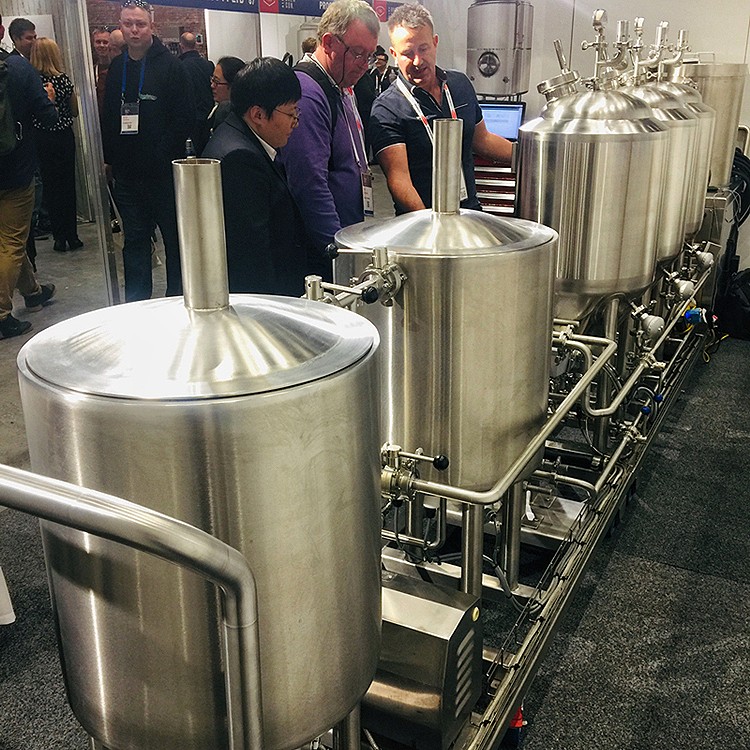
Marketplace home & living lifestyle home brewing d...
The home brewing and distilling market has grown in popularity in recent years, ...
More >>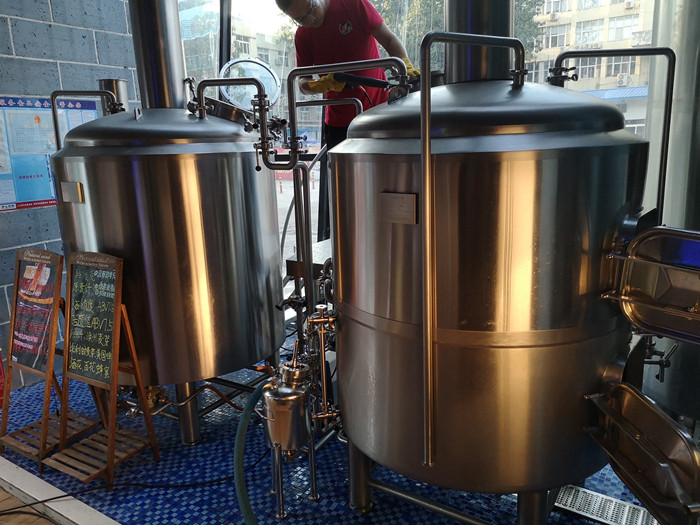
Beer brewhouse and fermentation tanks microbrewery
WEMAC-Main product categories:
Craft Beer equipment,Cider making machine,Beer b...
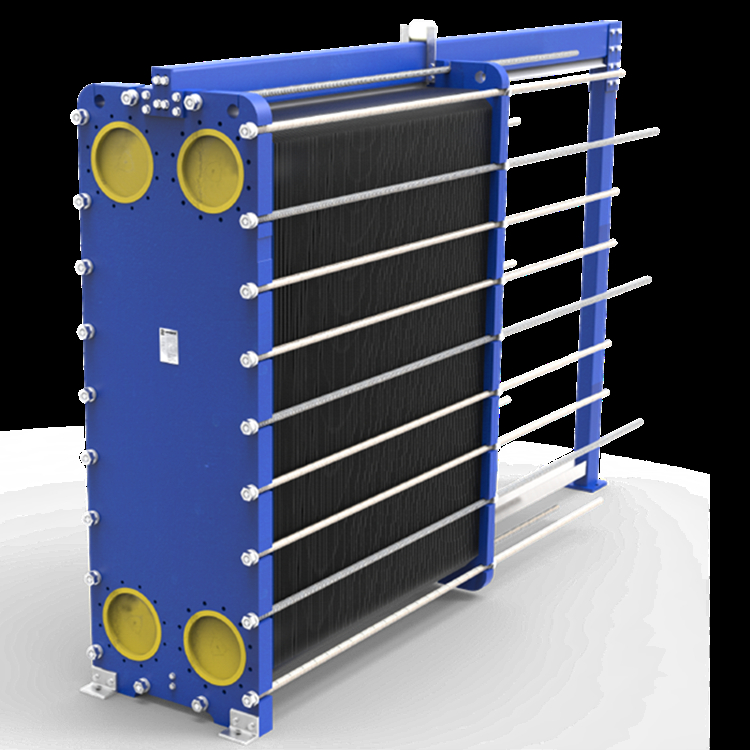
Best plate heat exchanger for beer brewery
The WEMAC plate heat exchanger (PHE) series is extensive, including multiple typ...
More >>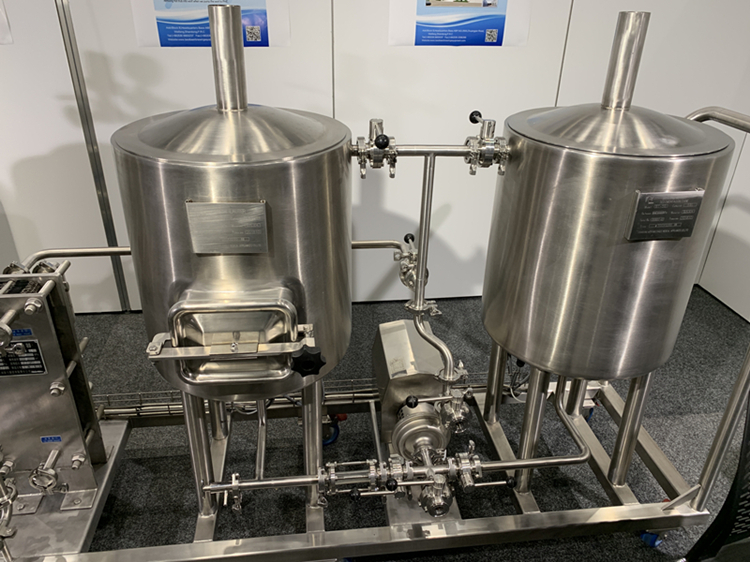
Home beer brew kits brewery equipment
This skid home brewing system is designed for craft brewing amateurs who has bee...
More >>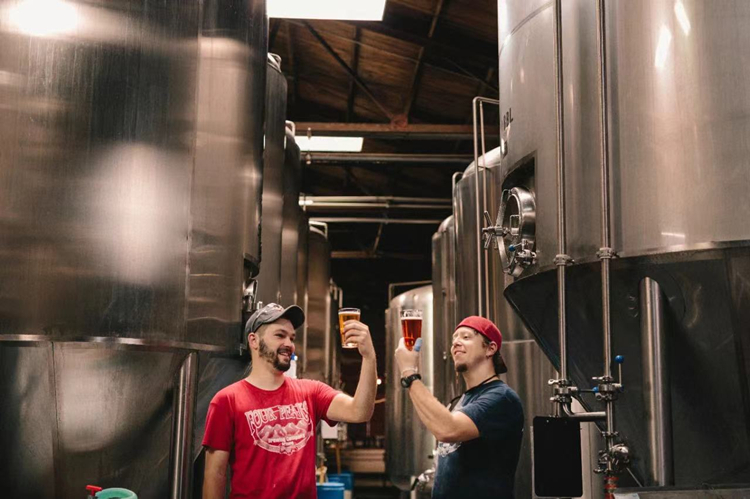
Top quality fermenter and beer bright tank
Brite or Bright Beer Tanks are also known as Beer Conditioning Tanks or Beer Ser...
More >>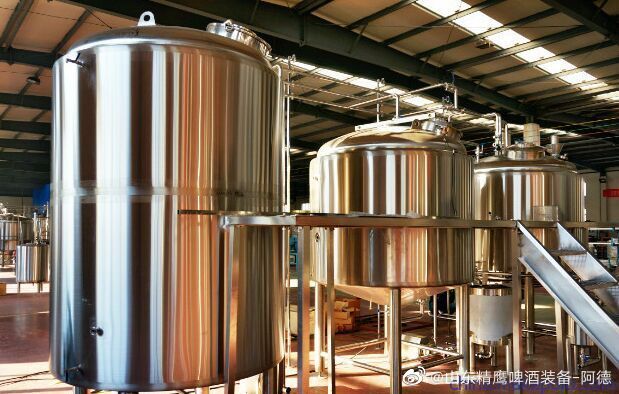
Pro two vessels 5BBL craft brewery in Michigan
Professional beer brewhouse sale well in Michigan state,turnkey brewery services...
More >>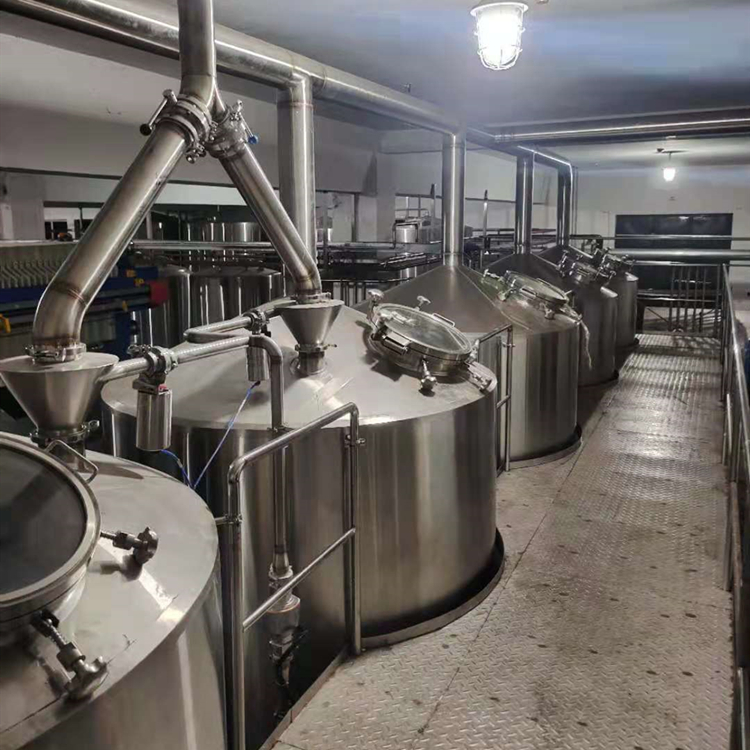
4000L Commercial Beer Brewery Equipment
4000L four vessels craft beer brewing brewery system,gas steam heating,with a be...
More >>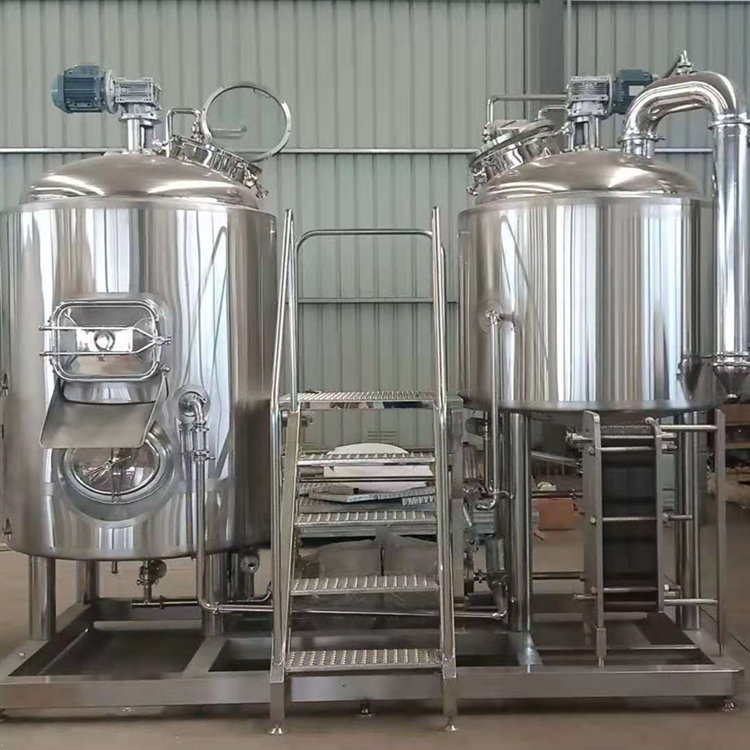
500L Top quality craft beer brewery equipment
Double vessels craft beer brewing brewhouse for sale,mash/kettle tun + lauter/wh...
More >>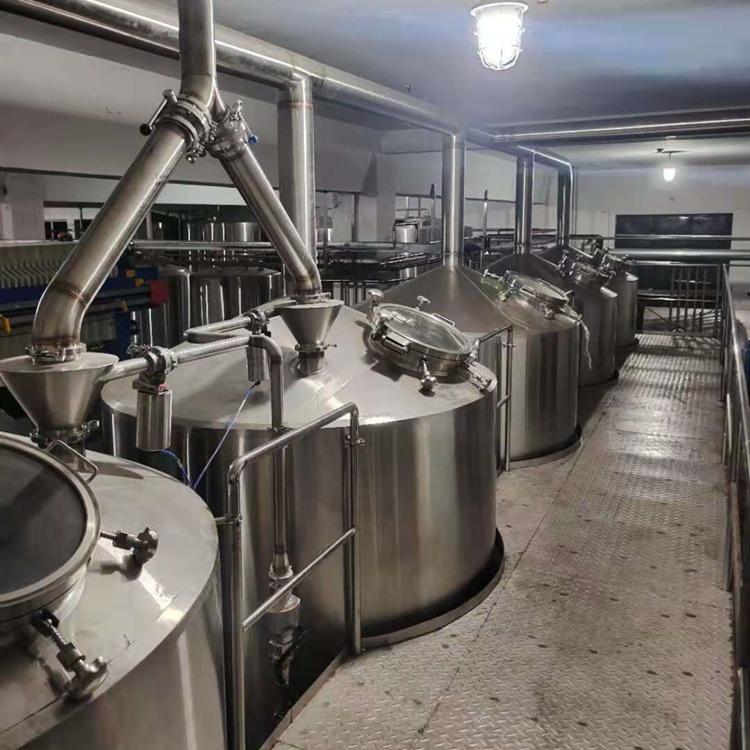
4000L Five vessels turnkey beer brewery
Five vessels craft beer brewhouse system suppliers,Double mash tun+double kettle...
More >>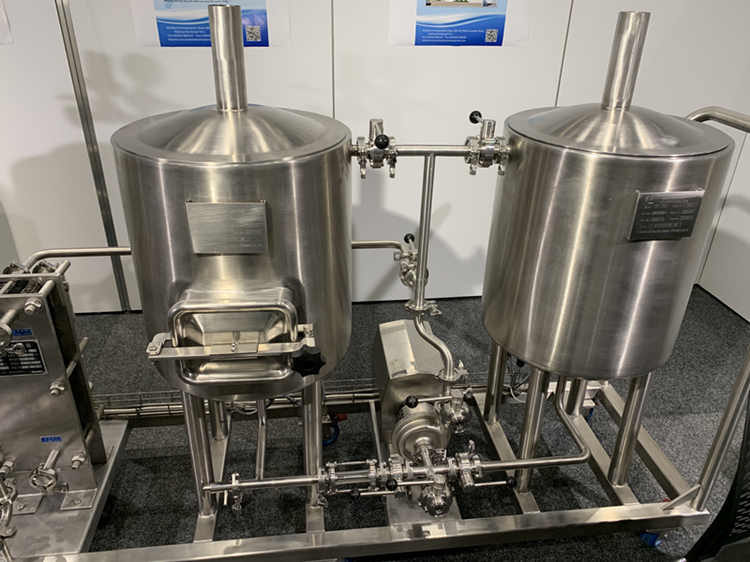
Best 50L home beer microbrewery equipment
Two vessels combination,mash/lauter tun+kettle/whirlpool tun brewery.electric co...
More >>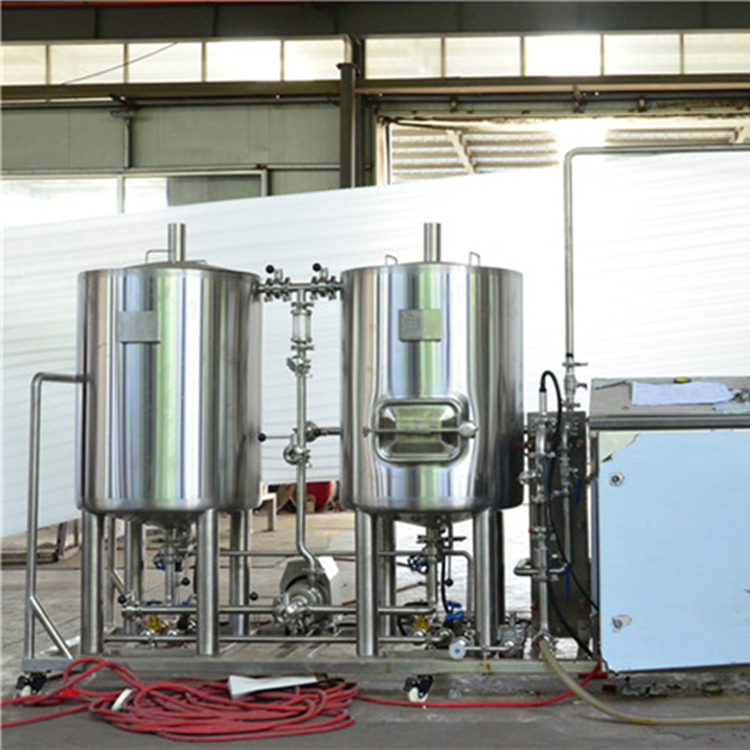
100L beer brewing home microbrewery
Mash/lauter/kettle tun+whirlpool tun,electric coil heating,two stages cooling,pl...
More >>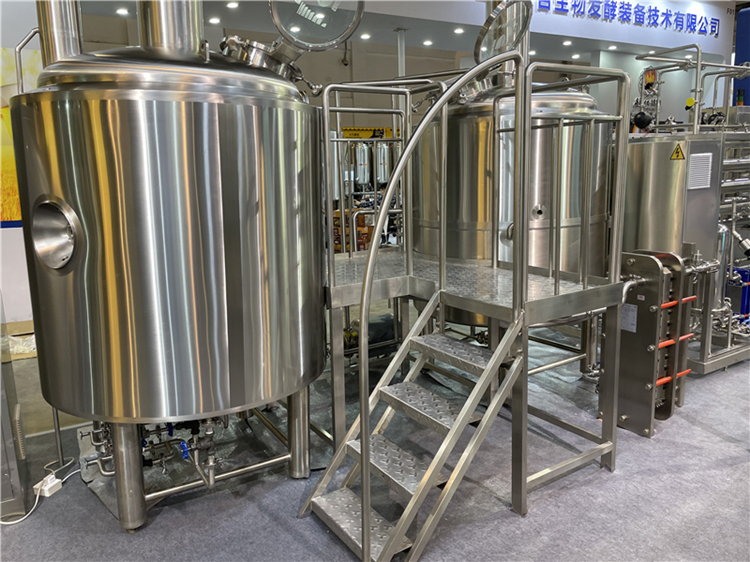
Build me a 1500L beer brewery
mini beer brewery machine from 50L,which is suitable to use in home and family b...
More >>